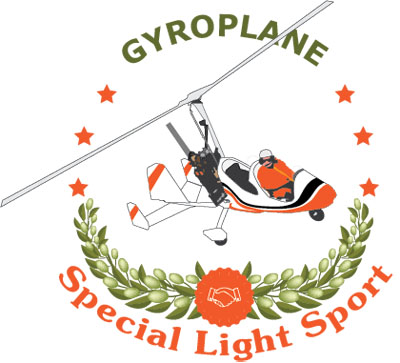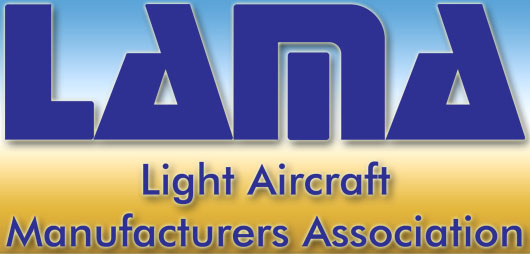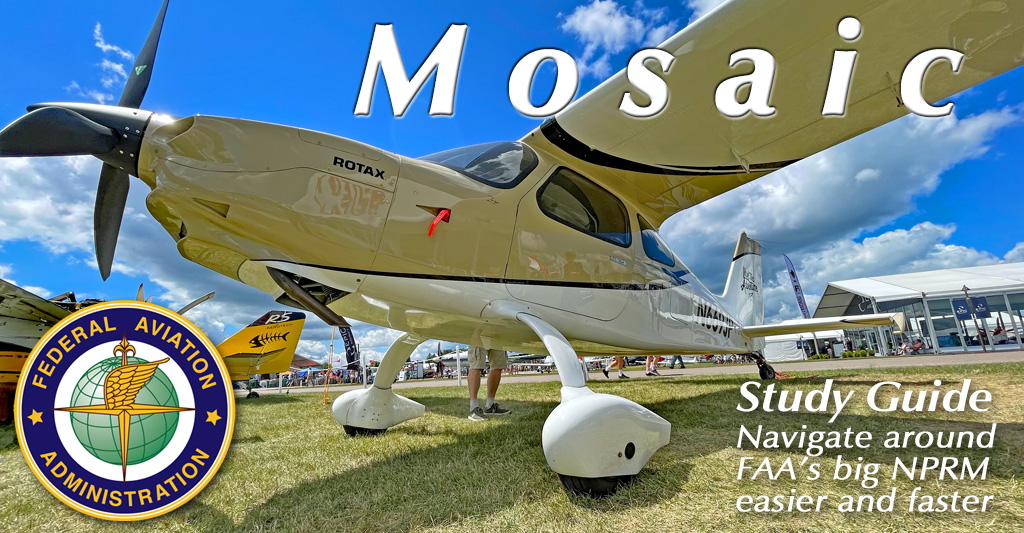
FAA proposed regulation has powerfully captured the attention of many pilots. Pilots have tons of questions. We have some answers. Everyone has a lot to read. But… uggghhh! Who wants to read this stuff? If it doesn’t put you to sleep, it might infuriate you. Overall, FAA’s proposal has been warmly received as it opens the door to more capable aircraft that a Sport Pilot can fly. That’s good but the document has problems, too. Following are four examples… This article is a longer, more challenging read than one about an aircraft. If you prefer to listen or watch, I recommend the podcast and a video below. Mosaic’s language invigorated many readers when the NPRM expressed support for a Sport Pilot (certificate holder) to fly at night — with proper training and a logbook endorsement. Yet then the proposal refers to other FAA regulations that require BasicMed or an AvMed. If you must have a medical, you are not exercising the central privilege of Sport Pilot.


 But… uggghhh! Who wants to read this stuff? If it doesn't put you to sleep, it might infuriate you.
Overall, FAA's proposal has been warmly received as it opens the door to more capable aircraft that a Sport Pilot can fly. That's good but the document has problems, too. Following are four examples…
But… uggghhh! Who wants to read this stuff? If it doesn't put you to sleep, it might infuriate you.
Overall, FAA's proposal has been warmly received as it opens the door to more capable aircraft that a Sport Pilot can fly. That's good but the document has problems, too. Following are four examples…

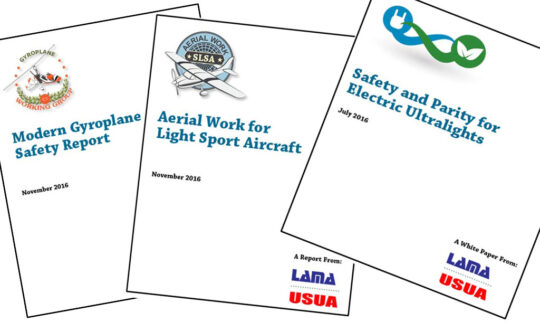 It just got a lot easier, thanks to
It just got a lot easier, thanks to 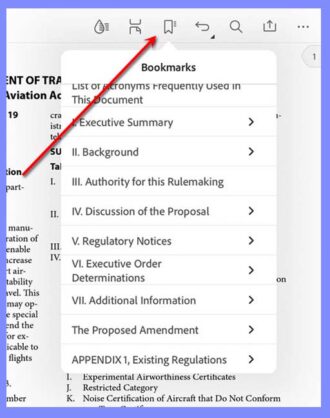
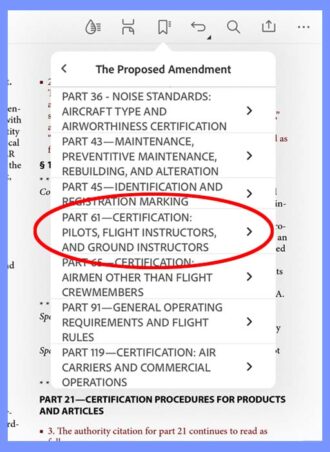
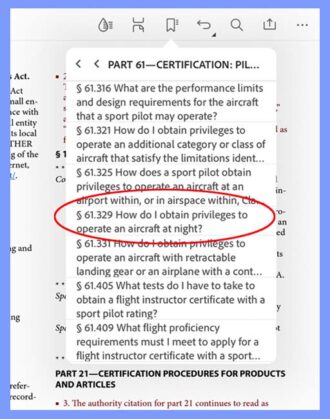
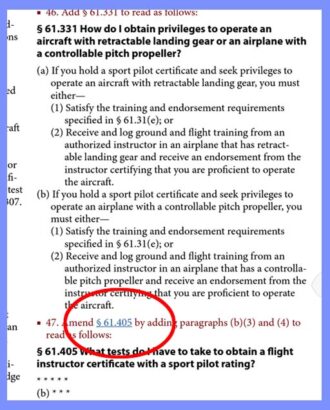
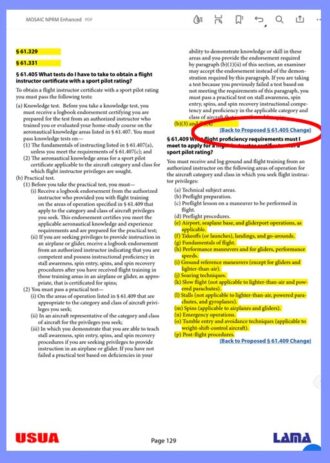

 Many readers are keen to learn more about the
Many readers are keen to learn more about the 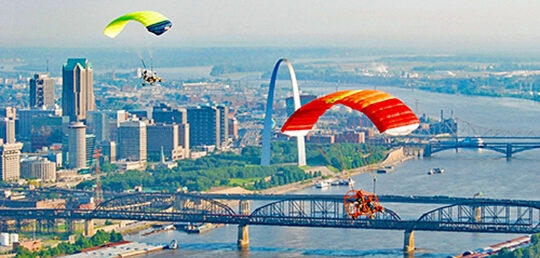 Some who try eventually hit upon the right formula but no one says this is easy. Technology has been particularly helpful to smaller enterprises, especially those that serve customers widely dispersed across the country. Whatever you think of social media, the fact is they help those with specialized interests find people who can provide services.
Some who try eventually hit upon the right formula but no one says this is easy. Technology has been particularly helpful to smaller enterprises, especially those that serve customers widely dispersed across the country. Whatever you think of social media, the fact is they help those with specialized interests find people who can provide services.
 One fellow has found his magic carpet. His instruction calendar has a few available slots in 2023 but he has already almost filled this year's schedule book. How did one man succeed and who is this story about?
One fellow has found his magic carpet. His instruction calendar has a few available slots in 2023 but he has already almost filled this year's schedule book. How did one man succeed and who is this story about?
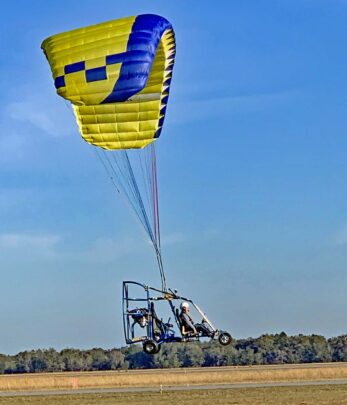 That work has been gratifying — and helped move the entire LSA industry forward — but Roy's personal choice of flight and his passion is focused on powered parachutes.
While he was working in this field and building his enterprise, Roy and I linked up in a new way in 2014, the 10th anniversary of SP/LSA. Roy had compiled many aspects of the regulation that could be improved. He assembled an impressive booklet of desirable changes complete with suggestions. Working together, Roy and I drew people from industry, from membership associations, and from FAA to a meeting at Sun 'n Fun nine years ago.
That work has been gratifying — and helped move the entire LSA industry forward — but Roy's personal choice of flight and his passion is focused on powered parachutes.
While he was working in this field and building his enterprise, Roy and I linked up in a new way in 2014, the 10th anniversary of SP/LSA. Roy had compiled many aspects of the regulation that could be improved. He assembled an impressive booklet of desirable changes complete with suggestions. Working together, Roy and I drew people from industry, from membership associations, and from FAA to a meeting at Sun 'n Fun nine years ago.
 Roy's hard work on advocacy for LSA — for which I was honored to be his partner at twisting FAA's arm — has paid off in a big way. The coming regulation incorporates every initiative that Roy and I proposed for Mosaic.
Roy's hard work on advocacy for LSA — for which I was honored to be his partner at twisting FAA's arm — has paid off in a big way. The coming regulation incorporates every initiative that Roy and I proposed for Mosaic.
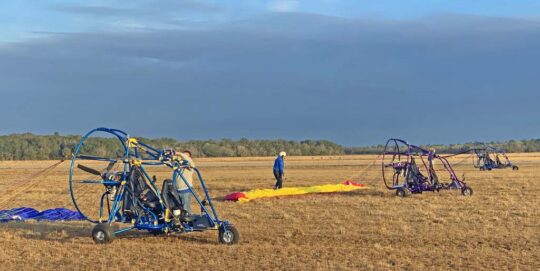 But important as this work may be, that's enough about advocacy. Let's talk about flying machines!
But important as this work may be, that's enough about advocacy. Let's talk about flying machines!
 Roy's training program begins before the student gets to the airport. Anyone anywhere can start by studying a book Roy wrote on the subject. Roy’s Powered Parachute Book has 470 pages of content covering every aspect of flying powered parachutes. The inch-thick, large-format book is densely illustrated with many beautiful graphics that help explain everything. Roy admitted, “Writing a book wasn’t nearly as hard as illustrating the book.”
He combines the textbook with online training using the Brainscape app. Roy explained, “There is a lot of material to retain when learning to fly. By starting the ground training at home, students are able to get through the flight training, the knowledge test, and the check ride that much faster and stress-free.”
Roy's training program begins before the student gets to the airport. Anyone anywhere can start by studying a book Roy wrote on the subject. Roy’s Powered Parachute Book has 470 pages of content covering every aspect of flying powered parachutes. The inch-thick, large-format book is densely illustrated with many beautiful graphics that help explain everything. Roy admitted, “Writing a book wasn’t nearly as hard as illustrating the book.”
He combines the textbook with online training using the Brainscape app. Roy explained, “There is a lot of material to retain when learning to fly. By starting the ground training at home, students are able to get through the flight training, the knowledge test, and the check ride that much faster and stress-free.”
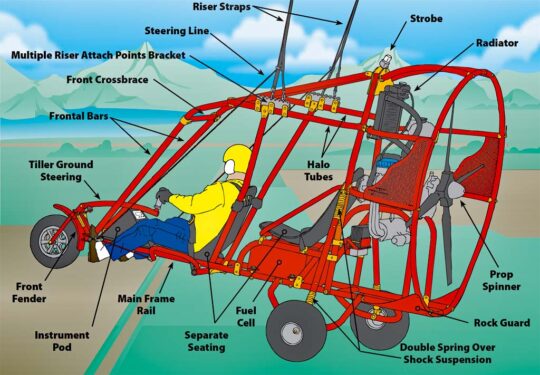
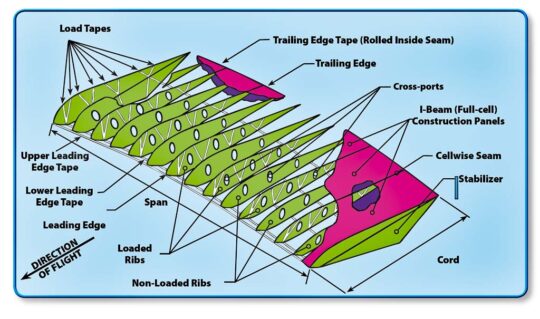 Thanks to a commitment to the safest practices, in the 30 years that Roy has been training powered parachutes, his program has been injury-free.
One of the key advantages of powered parachutes is their simplicity. These aircraft are designed to be easy to operate, and they require minimal training to fly. This makes them an ideal choice for people who are new to aviation, or who are looking for a more relaxed flying experience. The slow flying speed of powered parachutes makes them ideal low altitude sightseeing aircraft.
Thanks to a commitment to the safest practices, in the 30 years that Roy has been training powered parachutes, his program has been injury-free.
One of the key advantages of powered parachutes is their simplicity. These aircraft are designed to be easy to operate, and they require minimal training to fly. This makes them an ideal choice for people who are new to aviation, or who are looking for a more relaxed flying experience. The slow flying speed of powered parachutes makes them ideal low altitude sightseeing aircraft.
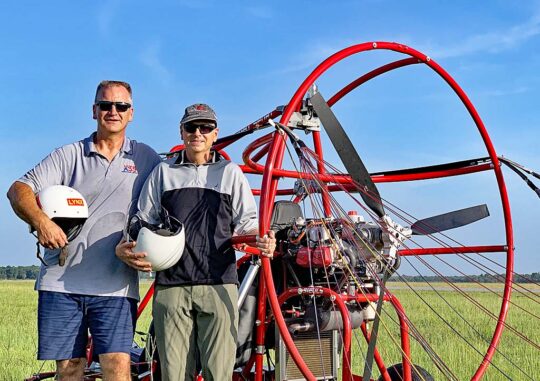
 As an experiment, this article was triggered by Roy asking ChatGPT to write a draft as though it was written by me. Roy tweaked it and sent it to me for final editing.
Is that still an AI-produced document? Well, yes and no. It certainly changed through human input. However, it was helpful to move things along more quickly and that's one of the benefits many are seeing with this new technology. Since pilots are quite technically interested and adept, I thought readers would enjoy hearing about this use of AI.
As an experiment, this article was triggered by Roy asking ChatGPT to write a draft as though it was written by me. Roy tweaked it and sent it to me for final editing.
Is that still an AI-produced document? Well, yes and no. It certainly changed through human input. However, it was helpful to move things along more quickly and that's one of the benefits many are seeing with this new technology. Since pilots are quite technically interested and adept, I thought readers would enjoy hearing about this use of AI.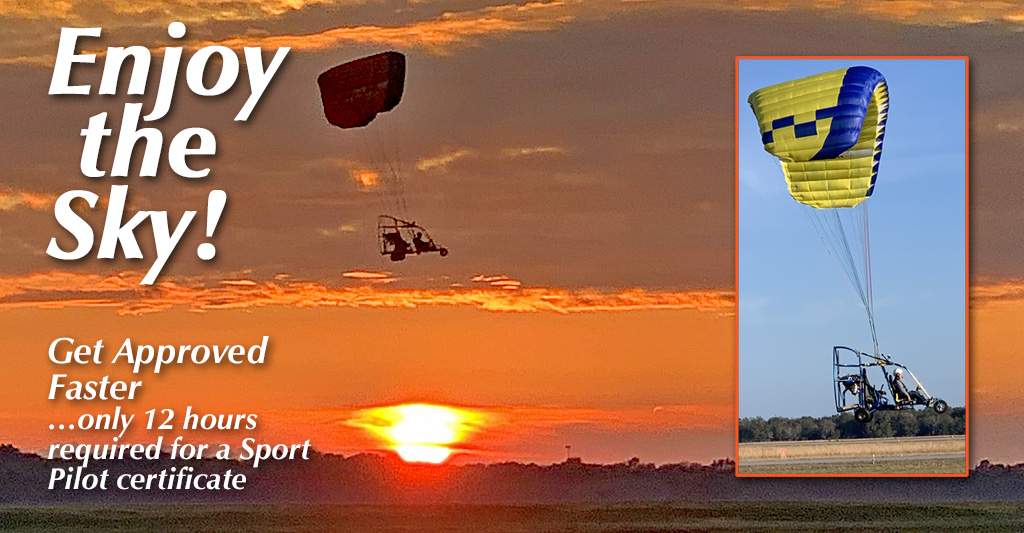
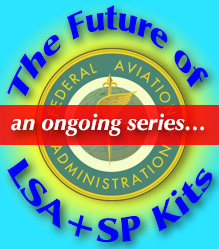 You know about drones. You may not know they are presently restricted to visual line of sight. However, a line-of-sight drone won't get your Amazon package delivered a few miles from the distribution center to your house.
Throughout Covid, a group has been working on potential changes to FAA regulations to allow drones to fly further, beyond visual line of sight (as military drones do now). It's abbreviated BVLOS.
You know about drones. You may not know they are presently restricted to visual line of sight. However, a line-of-sight drone won't get your Amazon package delivered a few miles from the distribution center to your house.
Throughout Covid, a group has been working on potential changes to FAA regulations to allow drones to fly further, beyond visual line of sight (as military drones do now). It's abbreviated BVLOS.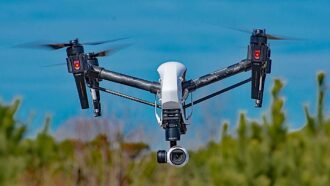 It is impossible to keep up with all the regulatory actions from dozens of agencies. Some of this stuff is dry as old bones. The document I'm focused on runs to 381 pages. If you're a real glutton for punishment,
It is impossible to keep up with all the regulatory actions from dozens of agencies. Some of this stuff is dry as old bones. The document I'm focused on runs to 381 pages. If you're a real glutton for punishment, 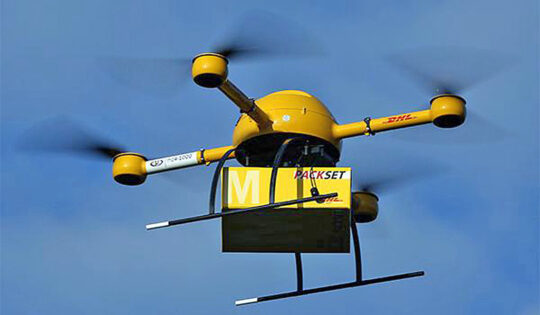 In fact, some organizations have big problems with what's been proposed (see "Friends in High Places" below).
The trouble is, such a lengthy report by an Aviation Rulemaking Committee, or ARC, will get the attention of FAA rule writers. The agency asked for a report. They got one. They have to read it. It might get enacted, as is… unless —!
Other groups have already given thoughtful responses but you should consider this an early warm-up for your letter writing later this year. I refer to the coming NPRM for MOSAIC — get ready to write your comments by fall 2022 — but here is another pre-regulatory action that demands our attention.
In fact, some organizations have big problems with what's been proposed (see "Friends in High Places" below).
The trouble is, such a lengthy report by an Aviation Rulemaking Committee, or ARC, will get the attention of FAA rule writers. The agency asked for a report. They got one. They have to read it. It might get enacted, as is… unless —!
Other groups have already given thoughtful responses but you should consider this an early warm-up for your letter writing later this year. I refer to the coming NPRM for MOSAIC — get ready to write your comments by fall 2022 — but here is another pre-regulatory action that demands our attention.
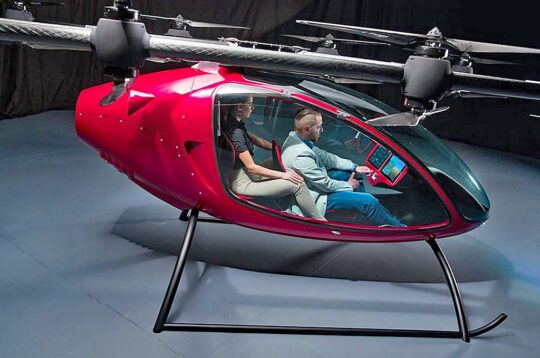
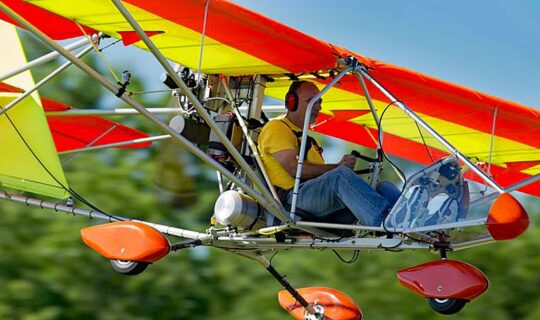
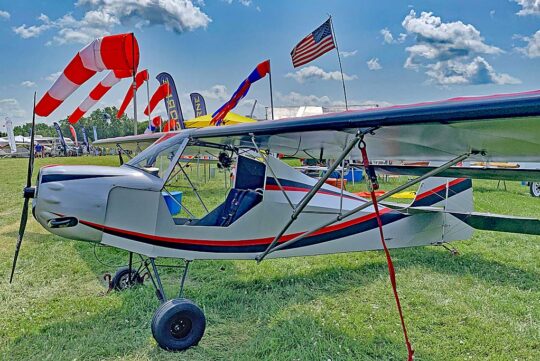
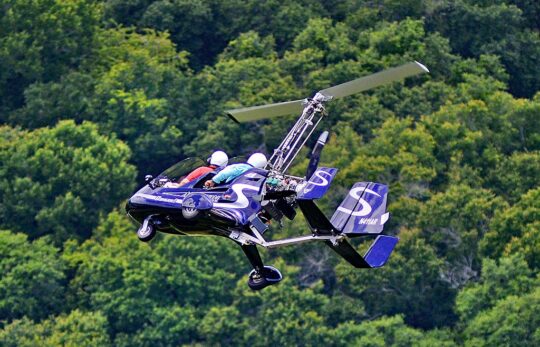
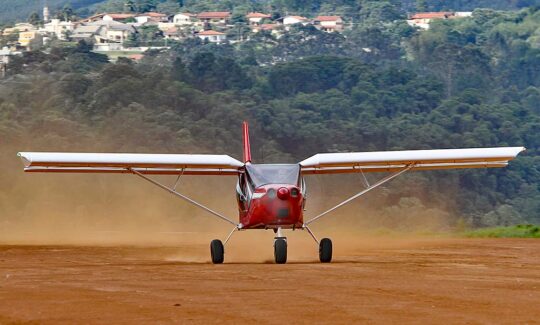
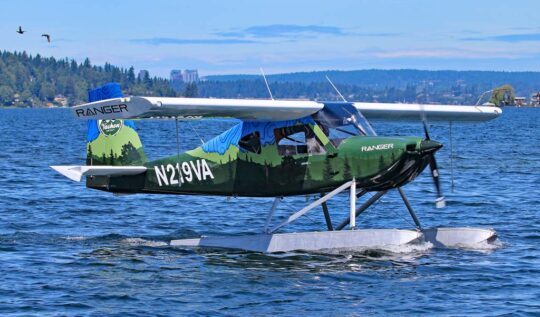
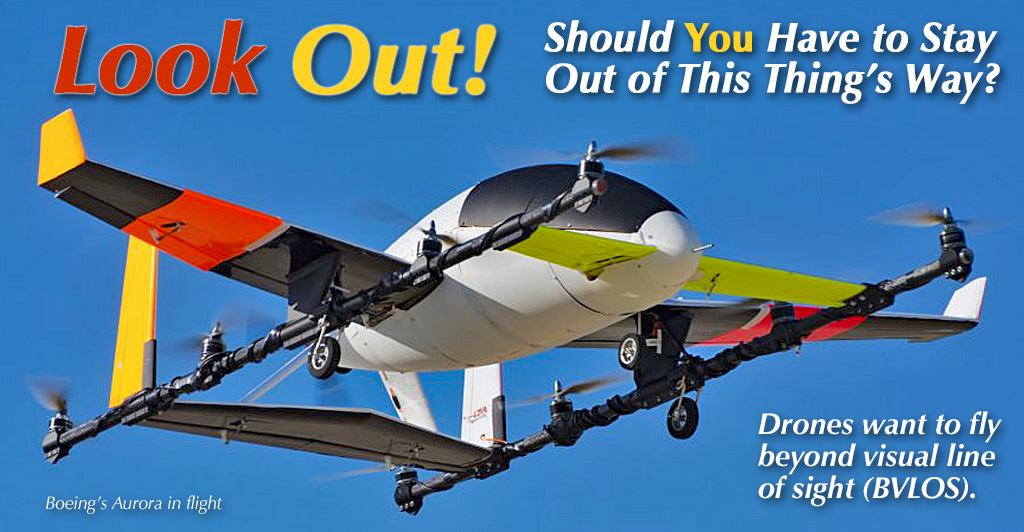
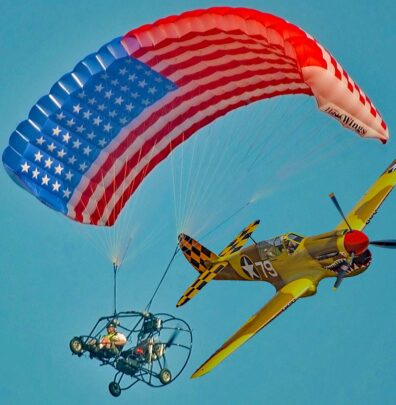
 "This departs from the long-standing premise that the compensation a flight instructor receives for instruction is not compensation for piloting the aircraft, but rather is compensation for the instruction,” concurred Justine Harrison, AOPA’s general counsel.
EAA also senses danger, writing, "[An] overly broadly worded ruling by the court could interfere with the right of Limited Category and Experimental Category owners to receive training in their own aircraft. While hiring such aircraft for training has usually been conducted via exemption or LODA, owners and operators have always been able to pay instructors to fly in their own aircraft."
"This departs from the long-standing premise that the compensation a flight instructor receives for instruction is not compensation for piloting the aircraft, but rather is compensation for the instruction,” concurred Justine Harrison, AOPA’s general counsel.
EAA also senses danger, writing, "[An] overly broadly worded ruling by the court could interfere with the right of Limited Category and Experimental Category owners to receive training in their own aircraft. While hiring such aircraft for training has usually been conducted via exemption or LODA, owners and operators have always been able to pay instructors to fly in their own aircraft."
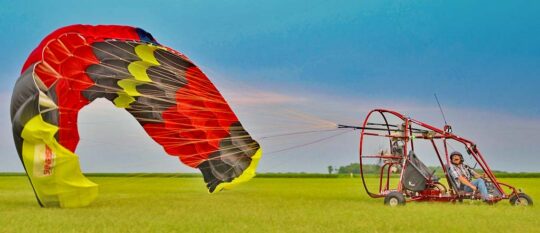
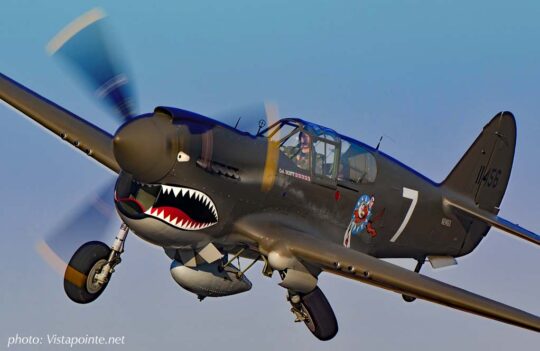 You see, for years, the FAA has kind of wanted things both ways.
You see, for years, the FAA has kind of wanted things both ways.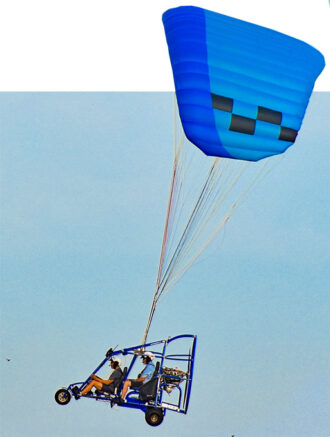 But what about Sport Pilot Flight Instructors (CFI-S)? Sport Pilot Flight Instructors are often simply Sport Pilots with the additional Sport CFI certificate. No Commercial Pilot Certificate. No 1st, 2nd, or 3rd Class Medical at all.
And the FAA is very strict about whether Sport Pilots can fly for “compensation or hire.” They can’t. The FAA makes that abundantly clear in the regulations. How’s this for making things painfully obvious?
§61.315 What are the privileges and limits of my Sport Pilot certificate?
(c) You may not act as pilot in command of a Light-Sport Aircraft:
(1) That is carrying a passenger or property for compensation or hire.
(2) For compensation or hire.
(3) In furtherance of a business.
But what about Sport Pilot Flight Instructors (CFI-S)? Sport Pilot Flight Instructors are often simply Sport Pilots with the additional Sport CFI certificate. No Commercial Pilot Certificate. No 1st, 2nd, or 3rd Class Medical at all.
And the FAA is very strict about whether Sport Pilots can fly for “compensation or hire.” They can’t. The FAA makes that abundantly clear in the regulations. How’s this for making things painfully obvious?
§61.315 What are the privileges and limits of my Sport Pilot certificate?
(c) You may not act as pilot in command of a Light-Sport Aircraft:
(1) That is carrying a passenger or property for compensation or hire.
(2) For compensation or hire.
(3) In furtherance of a business.
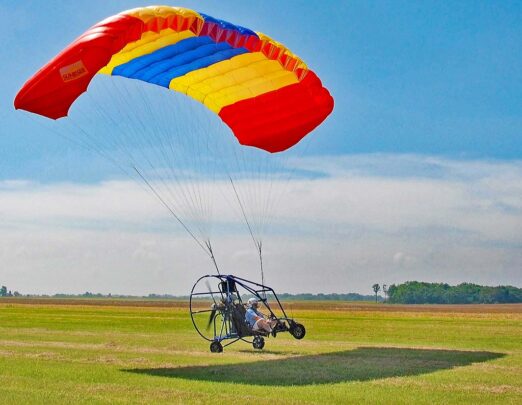 It seems to me that the FAA discharged its weapon at its own foot. Give those attorneys a bonus.
Now there is a solution. At least for the FAA’s Sport Pilot problem. LAMA and USUA have written the FAA and proposed additional language to both the GA flight instructor regulations and the Sport Pilot flight instructor regulations. It’s really pretty simple. We just want the FAA to include language saying that flight instructors have the privilege of providing flight instruction “for compensation or hire.”
Pretty simple, huh?
It seems to me that the FAA discharged its weapon at its own foot. Give those attorneys a bonus.
Now there is a solution. At least for the FAA’s Sport Pilot problem. LAMA and USUA have written the FAA and proposed additional language to both the GA flight instructor regulations and the Sport Pilot flight instructor regulations. It’s really pretty simple. We just want the FAA to include language saying that flight instructors have the privilege of providing flight instruction “for compensation or hire.”
Pretty simple, huh?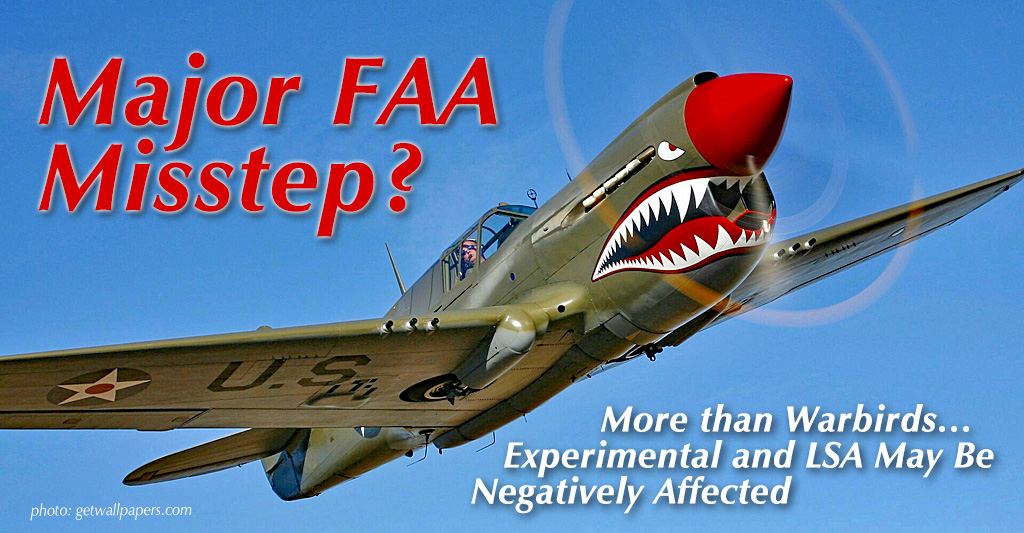
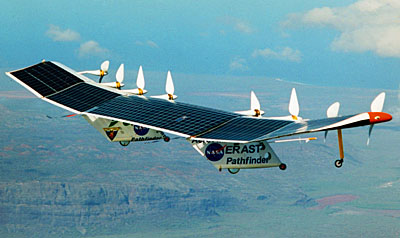
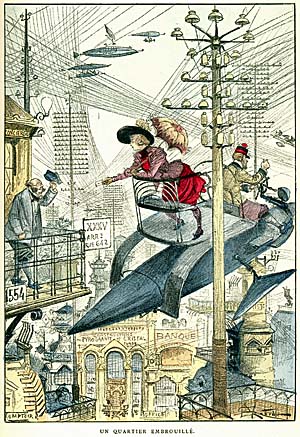 The truth is, electric aircraft go way back, to even before the Wrights' famous flight 115 years ago. An article about the newest LSA candidate — a
The truth is, electric aircraft go way back, to even before the Wrights' famous flight 115 years ago. An article about the newest LSA candidate — a 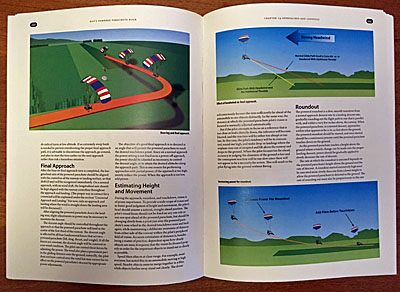 These unwieldy-looking flying machines are also some of the best priced and funnest aircraft you can consider. Plus, FAA regs say you can get a Sport Pilot certificate in a powered parachute in a mere 12 hours, the lowest requirement of any Light-Sport Aircraft. These facts make powered parachutes among the most approachable of any aircraft.
Roy Beisswenger's monumental effort — the large format (9 x 12 inches) volume contains about 400 pages — is significantly applicable to all forms of flight. The book contains Federal Aviation Regulations, test guides, and a glossary that almost any sport pilot would value.
If you've seen Roy's
These unwieldy-looking flying machines are also some of the best priced and funnest aircraft you can consider. Plus, FAA regs say you can get a Sport Pilot certificate in a powered parachute in a mere 12 hours, the lowest requirement of any Light-Sport Aircraft. These facts make powered parachutes among the most approachable of any aircraft.
Roy Beisswenger's monumental effort — the large format (9 x 12 inches) volume contains about 400 pages — is significantly applicable to all forms of flight. The book contains Federal Aviation Regulations, test guides, and a glossary that almost any sport pilot would value.
If you've seen Roy's 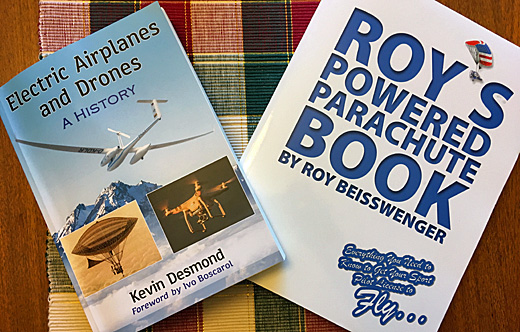
 While this space is usually dedicated to cool new airplanes — not boring government policy reviews …yawn! — this article will provide some rays of light to an industry approaching its 15th birthday (in September 2019). I think some of this may surprise you.
While this space is usually dedicated to cool new airplanes — not boring government policy reviews …yawn! — this article will provide some rays of light to an industry approaching its 15th birthday (in September 2019). I think some of this may surprise you.
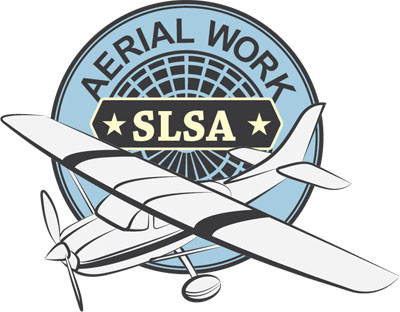 After many meetings with high-level FAA executives and project managers, we are pleased to report that ALL these objectives and one more — increasing the gross weight of LSA — are included in FAA’s present actions regarding rule making. Note that gross weight will probably be determined by a new system other than a fixed-weight number but the exact formula is pending while FAA finalizes their regulation plans.
To repeat, ALL these objectives are on FAA’s list for inclusion in eventual rule making.
“Eventual” is a key word, however…
Work Far from Done
In 2018, neither aircraft manufacturers nor pilots can take advantage of these new opportunities. While the future appears to hold great promise, LAMA and USUA have sought a faster solution. The changes sought should broaden the appeal of LSA leading to not only more sales but a higher value for the aircraft you buy.
After many meetings with high-level FAA executives and project managers, we are pleased to report that ALL these objectives and one more — increasing the gross weight of LSA — are included in FAA’s present actions regarding rule making. Note that gross weight will probably be determined by a new system other than a fixed-weight number but the exact formula is pending while FAA finalizes their regulation plans.
To repeat, ALL these objectives are on FAA’s list for inclusion in eventual rule making.
“Eventual” is a key word, however…
Work Far from Done
In 2018, neither aircraft manufacturers nor pilots can take advantage of these new opportunities. While the future appears to hold great promise, LAMA and USUA have sought a faster solution. The changes sought should broaden the appeal of LSA leading to not only more sales but a higher value for the aircraft you buy.
 We are proud of what we’ve been able to accomplish on the skinniest of budgets but we did not fly solo.
We also sought, and received, support for our initiatives from big organizations such as EAA, AOPA, and GAMA. While these giants of aviation first serve their own members, LAMA is 100% focused on light aircraft.
Rulemaking will consume at least three years and it could be even longer before such rules go into force, assuming no changes of present course.
Three to five years is a long time to wait for change for an industry not even 15 years old.
We are proud of what we’ve been able to accomplish on the skinniest of budgets but we did not fly solo.
We also sought, and received, support for our initiatives from big organizations such as EAA, AOPA, and GAMA. While these giants of aviation first serve their own members, LAMA is 100% focused on light aircraft.
Rulemaking will consume at least three years and it could be even longer before such rules go into force, assuming no changes of present course.
Three to five years is a long time to wait for change for an industry not even 15 years old.
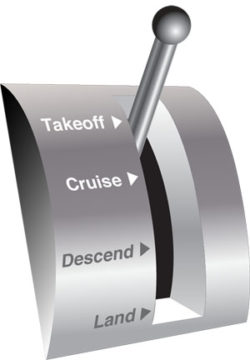 So, following a direct request from top FAA executives, we submitted a comprehensive business case for a program that we hope will much sooner allow manufacturers, dealers, owners, operators, and pilots to exercise the core-four-plus-one privileges.
The program we proposed is an evaluation and data-gathering period which will give FAA precisely what managers and executives say they need ("more data") in order to get approval to change current regulations.
LAMA’s plan will help industry and pilots but it will also help FAA.
Allowing industry and pilots to gain new opportunities under controlled circumstances can give everyone privileges in the near(er) term while generating valuable data for FAA to use in justifying regulation change.
LAMA and USUA are pleased to supply such a great outlook but caution that it took more than four years of hard work to get to this point and, as a much-revered author once wrote, "Anything can happen. Nothing has to happen." Nonetheless, we pledge to keep moving forward toward these goals.
So, following a direct request from top FAA executives, we submitted a comprehensive business case for a program that we hope will much sooner allow manufacturers, dealers, owners, operators, and pilots to exercise the core-four-plus-one privileges.
The program we proposed is an evaluation and data-gathering period which will give FAA precisely what managers and executives say they need ("more data") in order to get approval to change current regulations.
LAMA’s plan will help industry and pilots but it will also help FAA.
Allowing industry and pilots to gain new opportunities under controlled circumstances can give everyone privileges in the near(er) term while generating valuable data for FAA to use in justifying regulation change.
LAMA and USUA are pleased to supply such a great outlook but caution that it took more than four years of hard work to get to this point and, as a much-revered author once wrote, "Anything can happen. Nothing has to happen." Nonetheless, we pledge to keep moving forward toward these goals.
